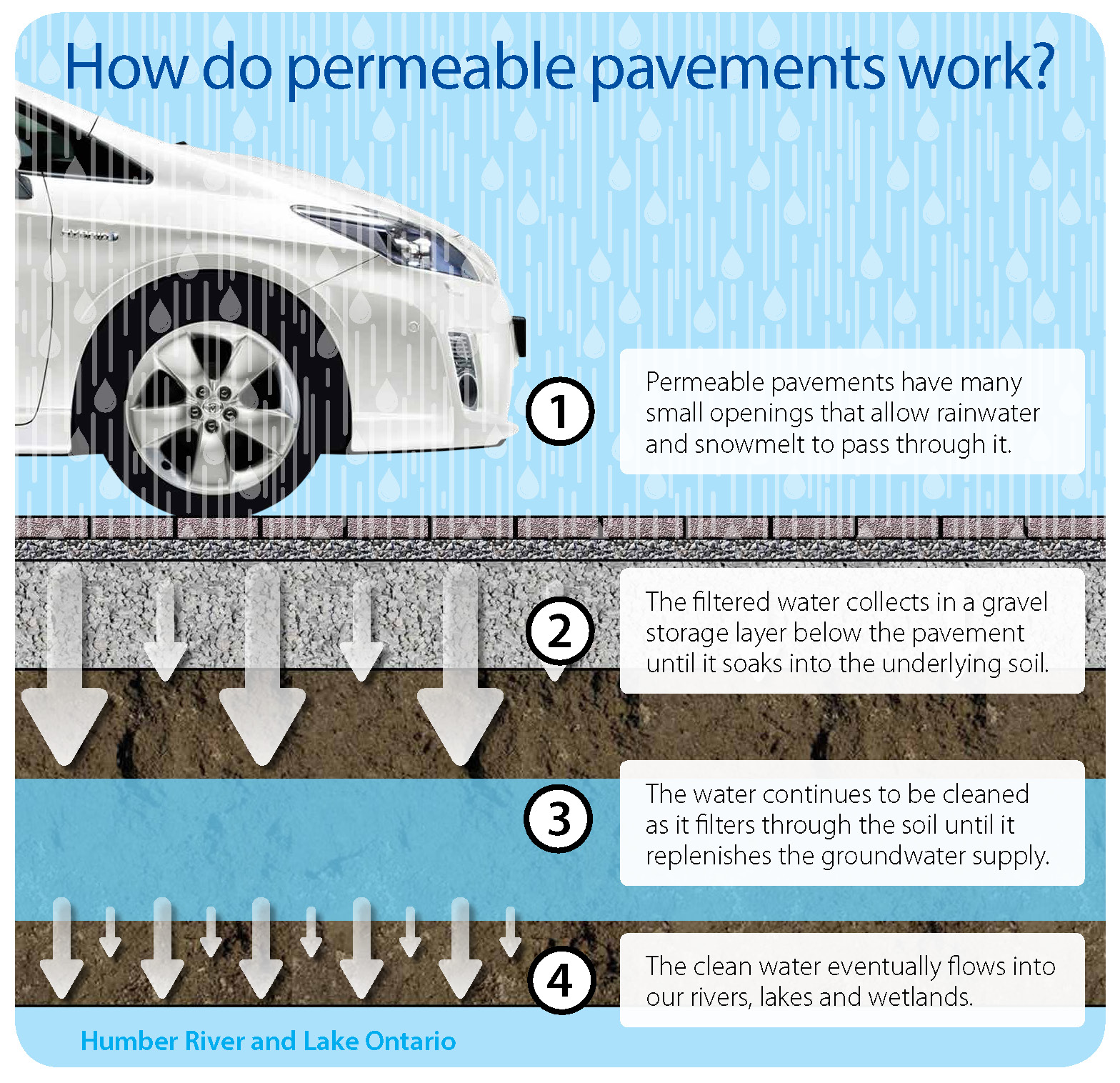On March 3rd, we were joined by Adele Pierre, Landscape Architect, to talk about the use of permeable pavements as a way of supporting the natural water cycle in urbanized areas. In this blog, we will briefly recap some of the main topics and resources that were discussed.

For a brief background on the water cycle, Hamilton’s water management system and green infrastructure solutions, you can read the Rain Blog Series:
Who did we hear from?
 Adele Pierre, Landscape Architect and ISA Certified Arborist, uses research based design to transform barren landscapes into pollinator paradises that provide beauty and habitat while absorbing stormwater. Adele has been the prime landscape architect for our Depave Barton projects and has helped create boulevards that balance nature and urban living.
Adele Pierre, Landscape Architect and ISA Certified Arborist, uses research based design to transform barren landscapes into pollinator paradises that provide beauty and habitat while absorbing stormwater. Adele has been the prime landscape architect for our Depave Barton projects and has helped create boulevards that balance nature and urban living.
Key Considerations When Choosing Permeable
Does the space need hardscaping?
Permeable pavements are a better option when it comes to reducing runoff, but they may not the best option! Consider where you can reduce the amount of hardscaping and use naturalized plantings instead.
- Can walkways or driveways be narrower?
- How much patio space is needed to accommodate a table or seating?

Cost Benefit
Permeable applications can often be more expensive than typical hardscaping applications. This is largely due to the thick gravel base required for filtration under many types. Consider the following:
- Are there grants/rebates available for your application?
- What is the slope/grade of the area? A 1% to 5% slope away from buildings is ideal for permeable applications. A slope greater than 5% will contribute to water running off faster than it can filter through.
- Are you committed to keeping up proper maintenance for ongoing functionality?
Installation
Permeables require a much deeper base layer than traditional applications. Make sure there are no underground utilities or conflicts.
- Do you have access to a contractor who is familiar with water management, as well as the specific application of the permeable product to ensure optimal function?
- Do you know what type of soil is on your property? Soil types range from having larger particles like gravel (higher drainage) to smaller particles like clay (lower drainage). More dense clay soils may require an underdrain for permeable applications.
What will the space be used for?
Permeable pavements are not always appropriate. Highly trafficked or frequent heavy vehicles can clog up pores quickly. Places that experience chemical or pollutant spills are also no appropriate, as these substances can contaminate groundwater stores.
How do permeable pavements work?
When water lands on a permeable pavement application, it enters the voids between the pavers or particles, and is filtered through layers of sand, gravel and soil, removing many pollutants and total suspended solids. The water then filters through soil, cooling it before it enters the groundwater system, and eventually our waterways. This helps to relieve some of the burden placed on our combined sewer system!

Photo from: TRCA STEP
Types of Permeable Paving
Concrete Unit Pavers
While permeable and conventional paver applications may not be distinguishable from the surface, there are a few important differences beneath the surface! In permeable applications:

- Units are placed farther apart
- Spaces are filled with a special aggregate that has a lot of void space, allowing water to move through
- There must be a “sub-base course” under the bedding made up of clean aggregates (no fine particles) acting as storage and a filter for water as it slowly soaks into the ground
A note on paver size: Smaller pavers = more joint space = better infiltration
Grid Systems
These grid systems, often made entirely of recycled plastics, easily snap together over a gravel base (similar to what was mentioned above with pavers). They can be cut to fit the desired size of application, and filled with grass, plants, dirt, blocks, or gravel.
Photo: Ecoraster filled with ¾ clear gravel to support seating.
A note on grid fill: Gravel fill drains faster than plant fill.
Asphalt-like Surface

These types of surfaces give the appearance of concrete or asphalt, but have void space that allow water to pass through. Sand and small particles are left out, unlike in traditional applications. Instead, larger pieces (e.g. rock, granite, recycled rubber) are mixed with a binding agent and poured in place. Similar to the last two examples, these applications also require a thick gravel base to allow drainage.
Photo: Porous Pave, made of recycled Ontario tires and stone aggregate, held together with polyurethane binder.
Notes on Maintenance
- Keep paver joints free from debris so water can move through
- Vacuum sweep every 1-2 years
- Keep soil and mulch away. Direct garden runoff away from permeable application, and never store soil or mulch directly on the permeable surface
- Do not use sand as a non-slip ice treatment
For more information on our green infrastructure programs, including the rebate program for homeowners, visit our NATURhoods homepage.







